If you thought Australia was all about the Sydney Opera House, kangaroos, and the endless deserts, it’s time to turn your compass south. Nestled about 150 miles off the Australian mainland, the island state of Tasmania awaits, holding a treasure trove of wonders.
Surrounded by the roaring waves of the Bass Strait, this “tail” of Australia is more than just a geographical appendage. It’s a place where nature and history intertwine, creating a tapestry of fun facts about Tasmania that will astonish even the most seasoned globetrotters. Dive in, and let’s unveil a few of these captivating tidbits about the world’s largest island state!
1. World’s Cleanest Air: Breathe Easy in Tasmania
Did you know the Earth’s purest air is in Tasmania? At the Cape Grim Baseline Air Pollution Station, researchers have been measuring air quality since 1976. Situated far from industrial contamination and aided by the Roaring Forties – westerly winds that have traveled across the ocean untouched – Tasmania’s air stands out in purity.
In fact, this isn’t just a fun fact about Tasmania; it’s a scientifically validated claim. The air samples from Cape Grim are often used as the global benchmark for “clean air” in scientific studies. So, if you’re in Tasmania, take a deep breath – it’s as fresh as it gets!
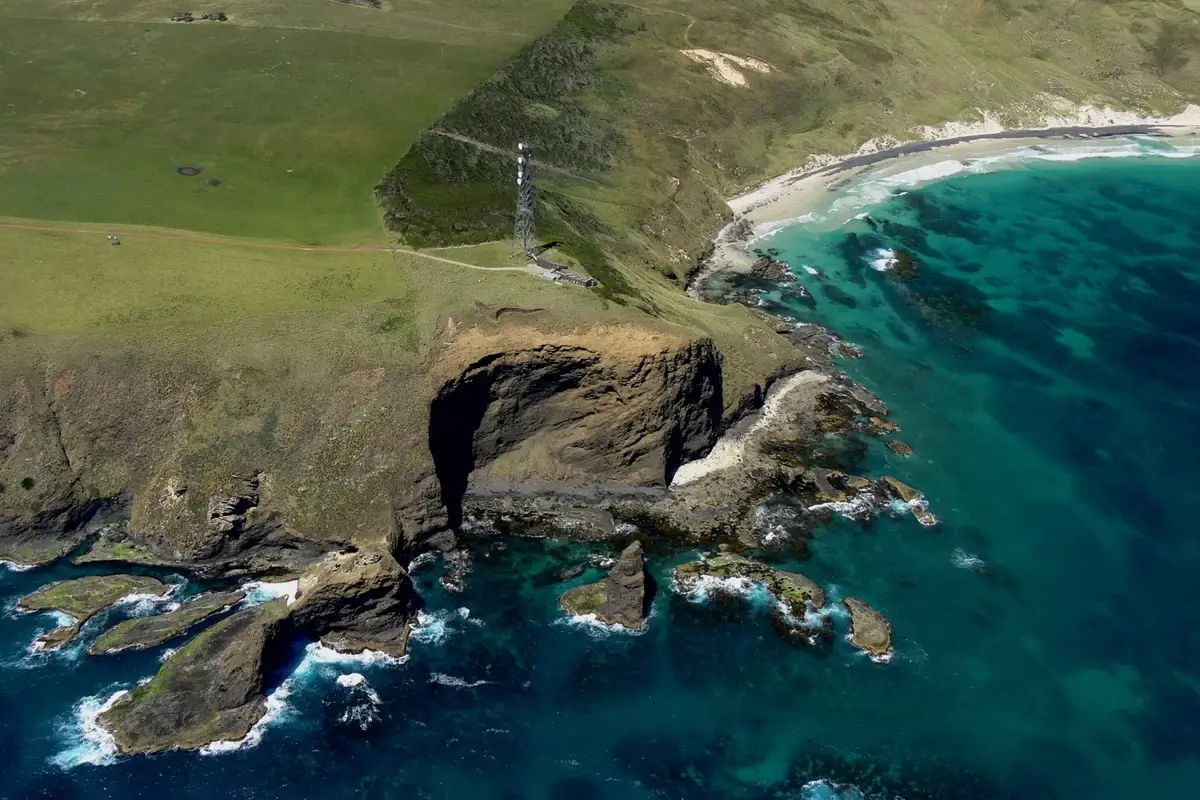
A view of the Cape Grim Baseline Air Pollution Station, Tasmania, Australia. Image source: blog.csiro.au
2. Tasmanian Devils: Not Just a Cartoon Character
While they gained fame from Looney Tunes, Tasmanian Devils are very real and uniquely Tasmanian. These marsupials, known scientifically as Sarcophilus harrisii, have been a part of Tasmania’s ecosystem for around 600,000 years. Weighing up to 12 kg, they’re the world’s largest carnivorous marsupials.
However, they’re now endangered due to the Devil Facial Tumour Disease, first identified in 1996. By 2009, the disease reduced their population by 80%. Thankfully, conservation efforts are on, with initiatives like the ‘Save the Tasmanian Devil Program’ making strides in their protection.
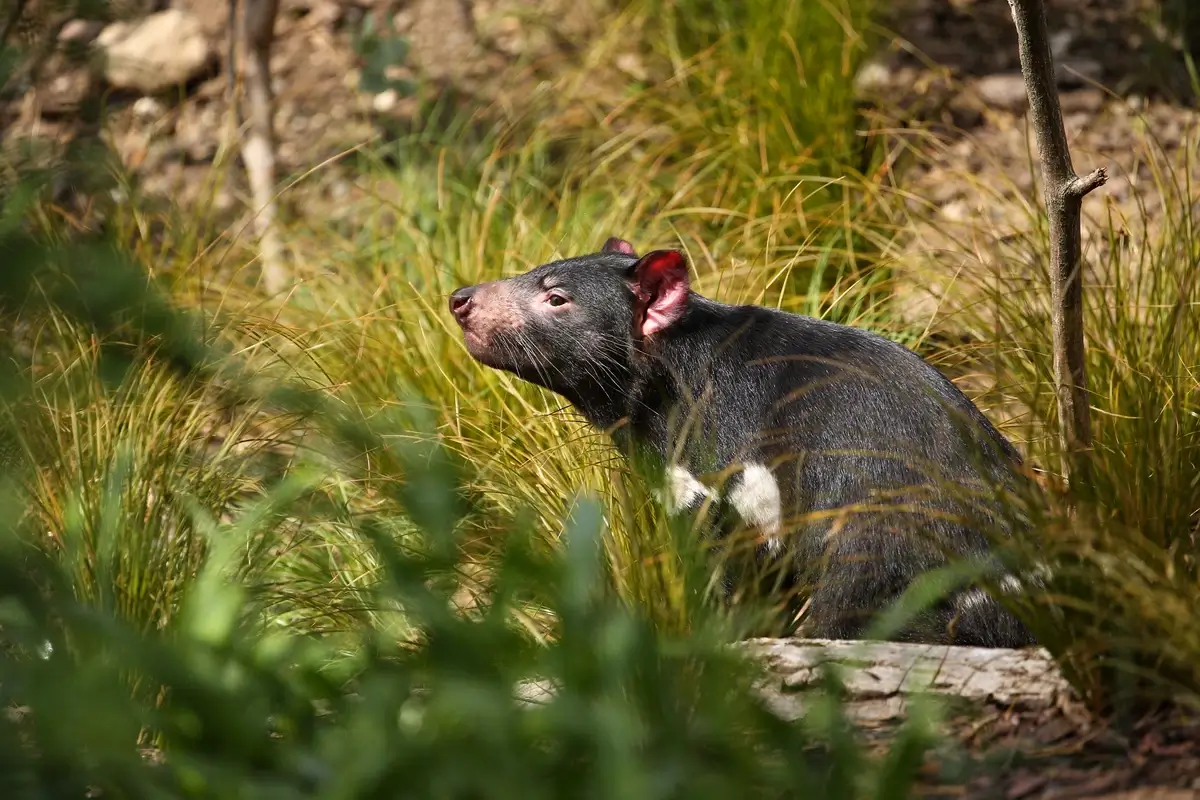
Image by vladimircech / Freepik
3. Two-Headed Tasmanians? The Curious Myth
Two-headed Tasmanians? Surely a myth, but where did it come from? The island’s geographical and social isolation from the Australian mainland led to many stereotypes, this being one. Historically, Tasmania was a penal colony, leading many mainlanders to make jests about the gene pool, hence the two-headed myth.
Though completely untrue, the myth offers a window into Tasmania’s social history, showing how misconceptions can arise from isolation and lack of knowledge. Today, Tasmanians are well-aware of this myth and often greet it with humor.
4. Bay of Fires: A Coastal Blaze
One of Tasmania’s most stunning landscapes is the Bay of Fires on the northeastern coast. Contrary to what its name might suggest, the bay isn’t alight with flames. Instead, it gets its fiery moniker from the vibrant orange lichen-covered granite boulders that dot its coastline. This vivid contrast of orange against the pristine white beaches and turquoise waters creates a breathtaking visual spectacle.
Historically, the name was attributed by Captain Tobias Furneaux in 1773, who saw the fires of Aboriginal people on the beaches. Today, the Bay of Fires is a haven for beachcombers, nature enthusiasts, and photographers, all captivated by its unique, blazing beauty.

Kristina D.C. Hoeppner / Flickr
5. Bass Strait’s Mystery: Separating the Mainland
The Bass Strait, stretching 150 miles wide, not only separates Tasmania from the Australian mainland but also holds mysteries of its own. It’s believed that once, around 8,000 years ago, this strait was dry land, connecting Tasmania to the mainland.
This connection allowed Indigenous Australians to migrate. However, when sea levels rose post the Ice Age, the region submerged, turning into the Bass Strait we know today. This rise in water isolated Tasmania, playing a significant role in its unique evolutionary and human history.
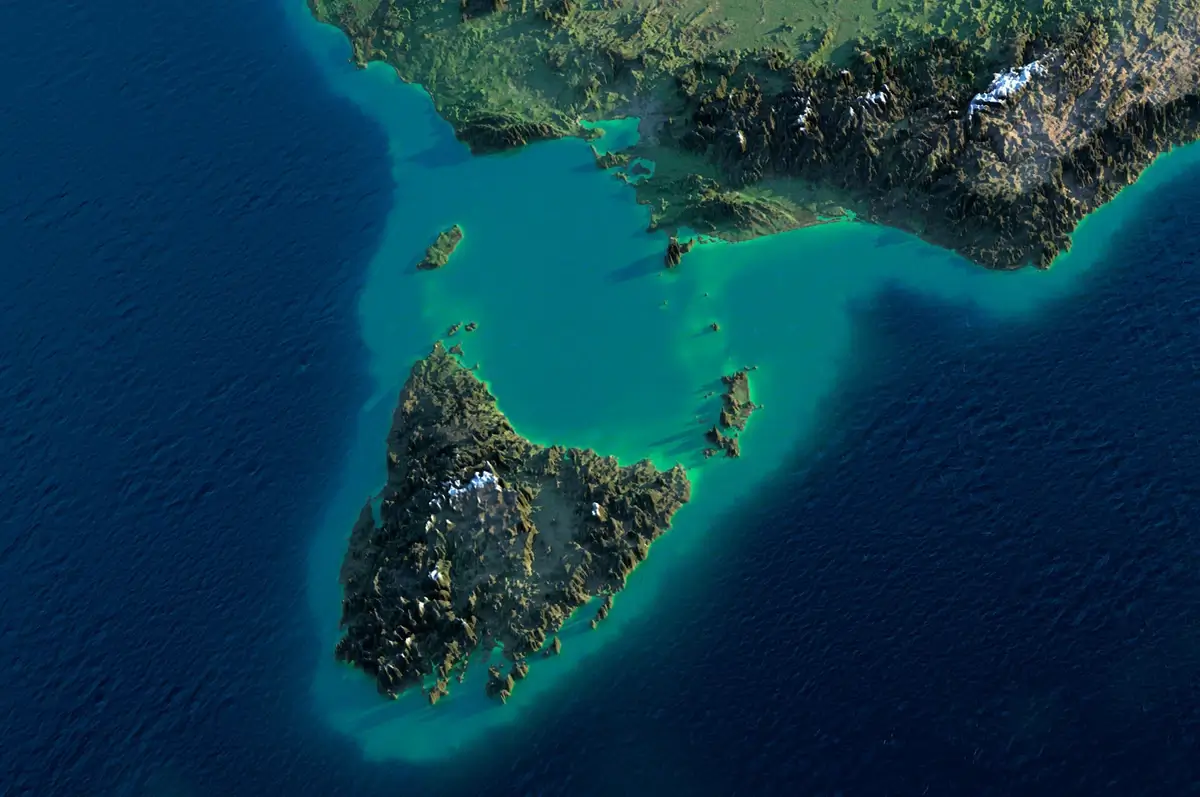
Image source: bassstraitgolf.com.au
6. Cradle Mountain: Nature’s Marvel Down South
Standing tall at 1,545 meters, Cradle Mountain isn’t just any peak; it’s a symbol of Tasmanian wilderness. Located in the Lake St. Clair National Park, this iconic mountain is an epitome of the region’s rugged beauty. Its jagged contours, formed by glaciation, are an absolute delight for nature lovers and photographers alike.
The Overland Track, a six-day trek starting from Cradle Mountain and ending at Lake St. Clair, is a bucket-list adventure, offering a firsthand experience of Tasmania’s diverse flora and fauna.

Steven Penton / Flickr
7. The Tassie Tiger: A Mysterious Extinction
Thylacine, commonly known as the Tasmanian Tiger due to its striped back, is one of the most profound mysteries of the animal kingdom. This carnivorous marsupial, which looked like a cross between a wolf and a large cat, was native to Tasmania. Sadly, the last known Thylacine died in the Hobart Zoo in 1936.
Factors like hunting, disease, and competition for food led to their decline. Though officially declared extinct in 1986, there have been numerous unconfirmed sightings, keeping the hope and mystery of the Tassie Tiger alive.
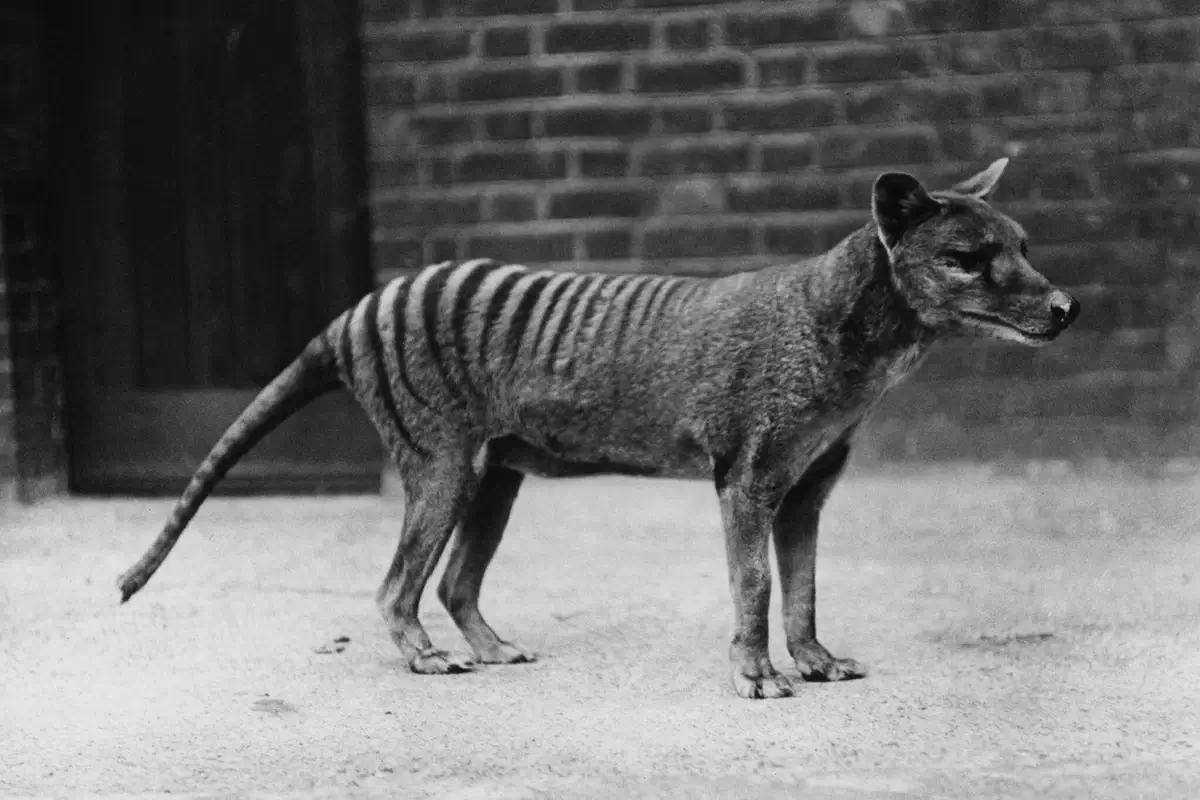
Image source: wired.com
8. Huon Pine Trees: Living for Millennia
In the verdant rainforests of Tasmania, Huon Pine Trees stand as silent witnesses to eons gone by. These ancient conifers, native to Tasmania’s wet southwestern corner, rank among the oldest living organisms on Earth. Some of these trees have been around for more than 3,000 years, with their wood preserving records of past climates.
Valued for its golden hue, fine grain, and unique scent, the Huon Pine is also resistant to decay, making it a sought-after material for woodwork. But remember, today’s living specimens are protected – a testament to their preciousness.
9. Wineglass Bay: Nature’s Perfect Drink?
Wineglass Bay, with its perfect crescent shape, is not just a feast for the eyes but also a marvel of nature. Located within the Freycinet National Park, this bay is often ranked among the world’s top beaches. Its name, intriguingly resembling a wine glass, doesn’t stem from viticulture but possibly from the bay’s shape or a darker history linked to whaling.
The crystal-clear waters juxtaposed against pink granite peaks make it an unparalleled beauty, drawing travelers from around the world.
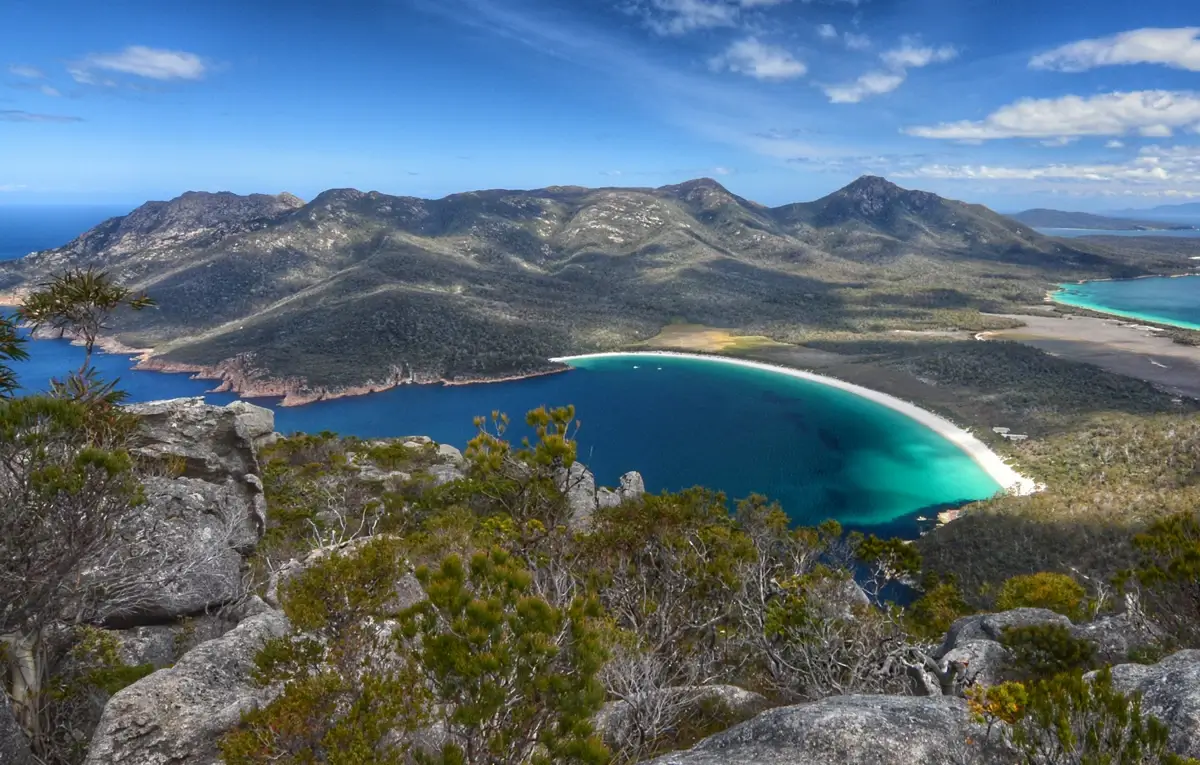
John Morton / Flickr
10. The Freycinet Peninsula: A Beauty From Above
Stretching gracefully into the Tasman Sea, the Freycinet Peninsula is a breathtaking masterpiece carved by nature. Beyond its iconic Wineglass Bay, the peninsula boasts granite mountains, secluded bays, and diverse wildlife. Its bird’s-eye view, resembling a sinuous dragon, is a top pick for aerial photographers.
Rich in both biodiversity and indigenous history, the Freycinet Peninsula has sites like the Hazards – pink and red granite formations – that leave an indelible mark on its visitors.
11. The Port Arthur Historic Site: Echoes of the Past
Delving into Tasmania’s past, Port Arthur stands as a somber yet crucial chapter. Established in 1830 as a timber station, it soon transformed into a penal settlement. For over four decades, it housed Britain’s most notorious convicts, marking a dark era in Australian colonial history.
Today, the World Heritage-listed Port Arthur Historic Site serves as a poignant reminder of the hardships faced by convicts. With over 30 historic buildings and ruins, it offers a deep dive into 19th-century prison life.
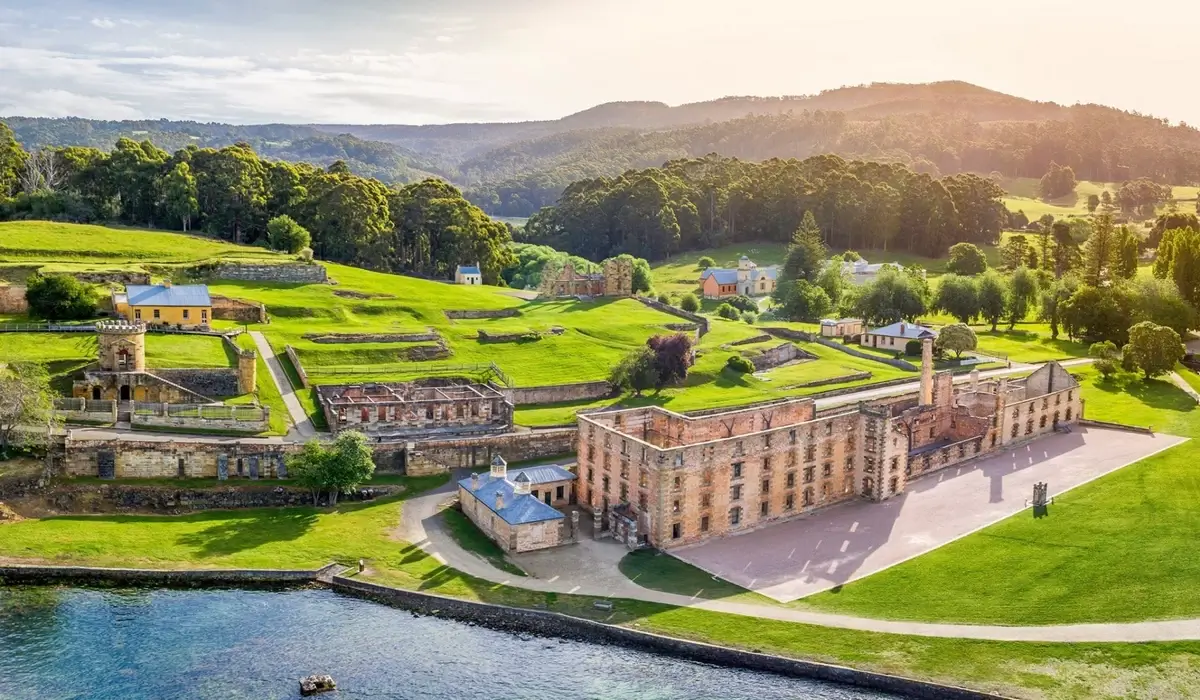
Image source: tourismtown.com
12. The Spirit of Tasmania: More than a Ferry Tale
Sailing across the Bass Strait, the Spirit of Tasmania isn’t just a ferry service; it’s an experience. Connecting the Australian mainland to Tasmania, this iconic vessel has been a lifeline and a herald of adventures since its maiden voyage in 1985. Onboard, you’re promised more than transportation – there’s entertainment, Tasmanian gourmet food, and a taste of what awaits on the island.
Beyond logistics, the Spirit embodies Tasmania’s welcoming nature and the excitement of exploring the unexplored.
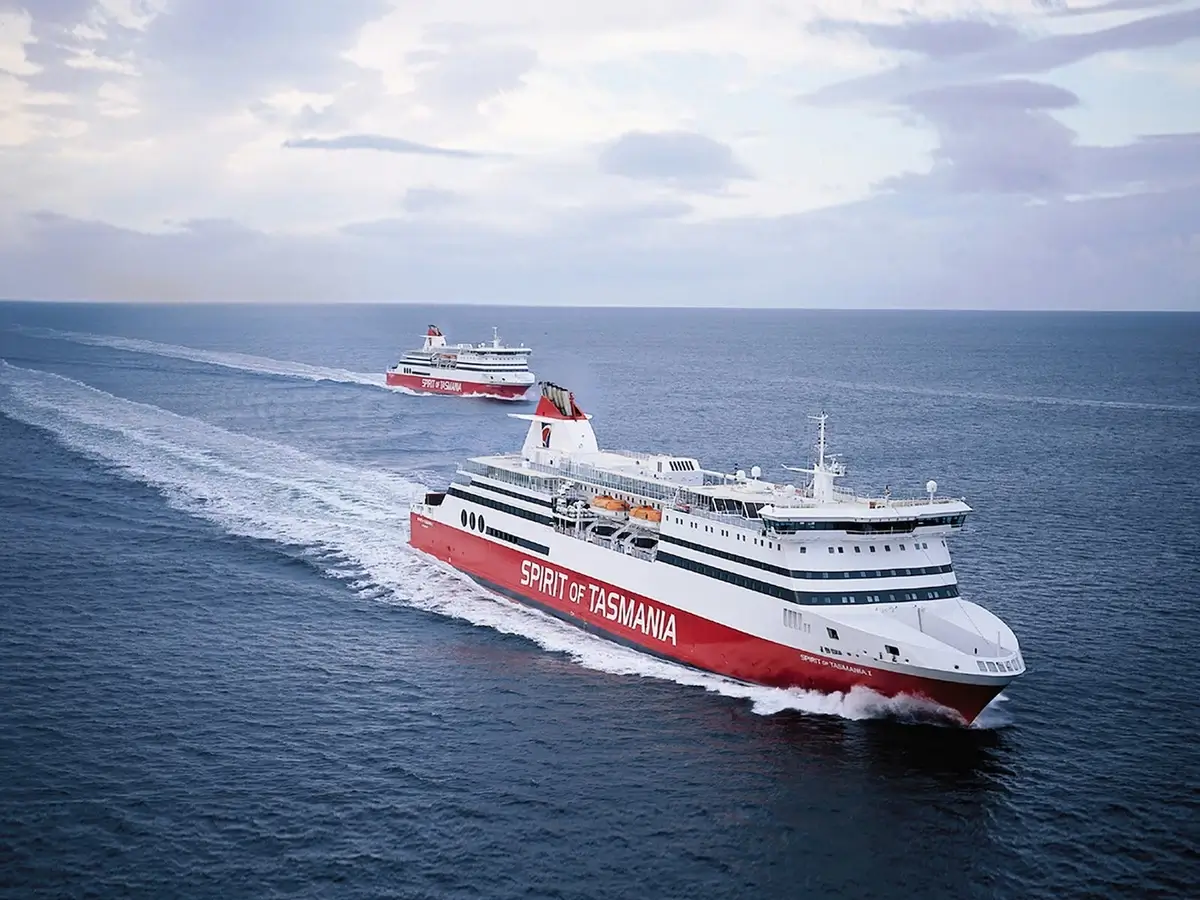
Image source: discovertasmania.com.au
13. Largest Lavender Fields: A Purple Paradise
In Tasmania’s northeast, there’s a place where the land bleeds purple. Bridestowe Lavender Estate is home to the world’s largest privately-owned lavender fields. Spanning 260 acres, this fragrant expanse blooms in December and January, turning the landscape into a surreal purple paradise.
Beyond its visual appeal, Bridestowe produces lavender products that are cherished globally. From the calming essential oils to the delicious lavender ice cream, it’s a sensorial delight.
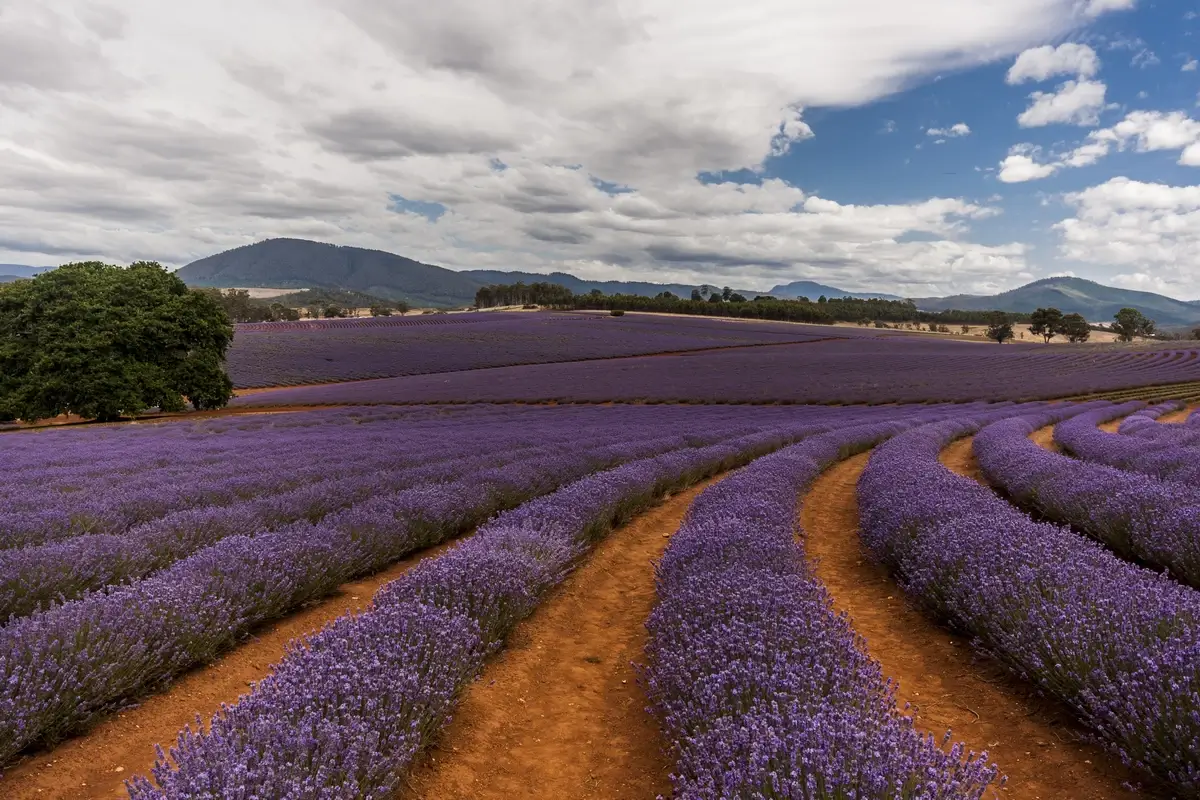
Steven Penton / Flickr
14. MACq 01: A Storytelling Hotel Experience
Overlooking Hobart’s waterfront, MACq 01 isn’t your typical luxury hotel. Dubbed as Australia’s first storytelling hotel, each of its 114 rooms narrates a unique Tasmanian character’s tale, from heroes and villains to explorers and convicts. The hotel’s architecture and design elements also pay homage to Tasmania’s rich history and culture.
Guests are not just offered a stay but an immersive journey through Tasmania’s diverse stories, making every visit truly memorable.
15. The MONA Museum: Edgy, Cool, and Unique
The Museum of Old and New Art (MONA) in Hobart isn’t just another museum; it’s an experience that challenges conventions. Opened in 2011 by David Walsh, a mathematician and art collector, MONA is Australia’s largest privately-funded museum. With its underground labyrinths showcasing everything from ancient Egyptian mummies to avant-garde contemporary art, it pushes boundaries.
Often provocative and always intriguing, MONA has reshaped Tasmania’s cultural landscape, making it a must-visit for those seeking the unexpected.
16. A World of Cheeses: Tasmania’s Dairy Mastery
Dairy farming isn’t just an industry in Tasmania; it’s an art form. Blessed with a temperate maritime climate and fertile pastures, Tasmania produces some of Australia’s finest cheeses. From the creamy brie of King Island to the sharp vintage cheddar of Pyengana, Tassie’s cheeses are a testament to the island’s dairy expertise.
And it’s not just about taste. These cheeses encapsulate Tasmania’s rich dairy history, which dates back to the early 19th century, making every bite a delicious trip back in time.

Image source: tasmania.com
17. Hobart’s Dark Mofo: A Celebration of the Dark and Mysterious
If you’re looking for a festival that embraces the dark and supernatural, Hobart’s Dark Mofo is the one for you. An annual festival curated by the Museum of Old and New Art (MONA), Dark Mofo delves deep into centuries-old winter solstice rituals, contemporary art, music, and theatre. From its iconic nude solstice swim in the chilly waters of the Derwent River to large-scale public art installations and immersive performances, this festival is both a cultural celebration and a sensory experience.
Not just a festival, Dark Mofo is a bold exploration of the connections between ancient and modern, darkness and light, fear and joy.
18. Convict Brick Trail: Walking Through History
Tasmania’s Convict Brick Trail isn’t just a pathway; it’s a tangible connection to the island’s past. Embedded within the sidewalks of Hobart, these bricks, engraved with the names of convicts transported to Tasmania, serve as a somber reminder of the island’s colonial history. Each brick, representing a life and a story, is a testament to those who toiled and built modern-day Tasmania.
This unique trail offers a glimpse into the lives of thousands who, despite their convict status, played a vital role in shaping Tasmania’s heritage.
19. Bruny Island’s Gourmet Delights: A Foodie’s Heaven
Bruny Island isn’t just a visual treat; it’s a culinary paradise! Located off the southeastern coast of Tasmania, this island is a gourmet’s dream come true. From the creamy cheeses of Bruny Island Cheese Company to the fresh oysters of Get Shucked, every bite is a celebration of local produce.
And it’s not just about individual dishes. The island offers a holistic gastronomic journey, combining the flavors of the land with the tales of its people, making every meal an unforgettable experience.
20. Flinders Island’s Gems: Beyond the Bass Strait
Beyond the roiling waters of the Bass Strait lies a jewel: Flinders Island. Part of the Furneaux Group of 52 islands, Flinders boasts a raw, untouched beauty. From its rugged mountains to pristine beaches, the island is a haven for nature lovers. But its real gems? The Killiecrankie diamonds. Not actual diamonds, but stunning topaz stones, these “diamonds” are a collector’s dream.
With its rich Indigenous history and diverse ecosystems, Flinders Island is a testament to the wonders that lie just beyond the horizon.
21. Tassie’s Unique Climate: Cool Climate, Cool Wines
Tasmania’s climate isn’t just cool; it’s perfect for winemaking. The island’s temperate maritime climate, with its long autumns and cool summers, is ideal for producing some of Australia’s finest wines, particularly its acclaimed Pinot Noir and sparkling varieties. The Tassie wines reflect the terroir, embodying the island’s unique geographical and climatic characteristics.
Tasmania’s wine regions, from Tamar Valley to Coal River Valley, beckon oenophiles from around the world, promising a sip that’s truly Tasmanian.
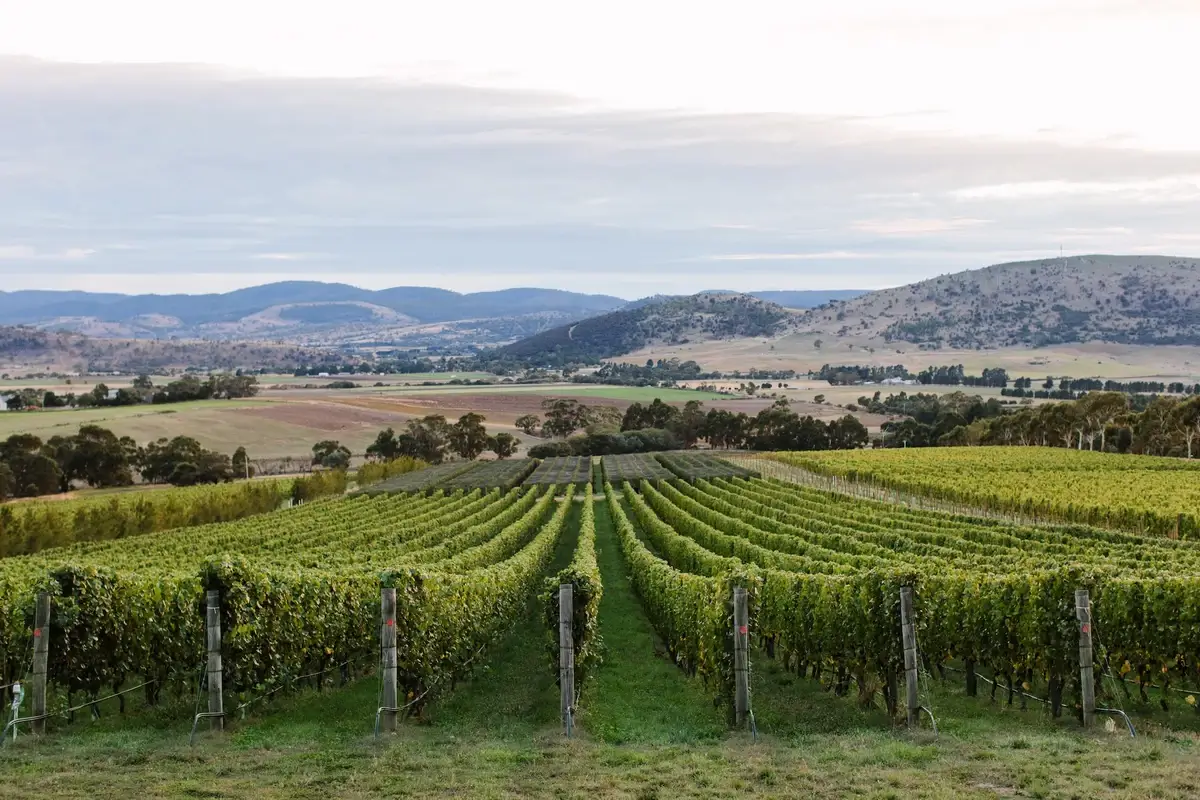
Image source: theaustralianwinecompany.com
22. Tarkine Rainforest: World’s Second Largest Temperate Forest
Nestled in Tasmania’s northwest lies the Tarkine, a rainforest realm spanning over 447,000 hectares. Recognized as the world’s second-largest temperate rainforest, the Tarkine is a stronghold of ancient plants, some tracing back to the supercontinent Gondwana.
Beyond its lush green canopy, the Tarkine is home to a plethora of wildlife, from the iconic Tasmanian Devil to over 100 bird species. A walk here is a step back in time, offering a glimpse of the world as it once was.
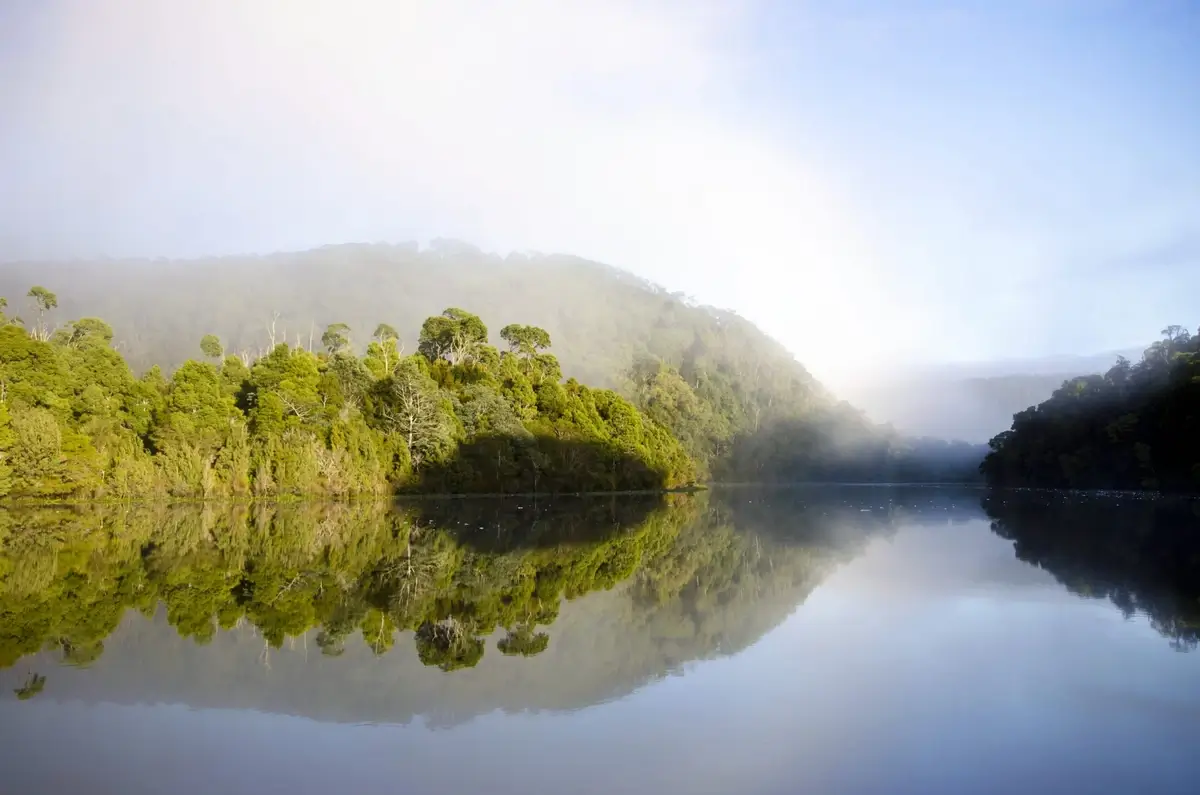
Image source: australiangeographic.com.au
23. Prison Without Walls: Sarah Island’s Unique History
In the heart of Macquarie Harbour lies Sarah Island, a place with a past as dark as its surrounding waters. Used as a penal settlement between 1822 and 1833, Sarah Island was known for its brutal conditions. However, what set it apart was its lack of walls. The treacherous waters of the harbour and the impenetrable rainforests acted as natural barriers, making escape almost impossible.
Today, the ruins stand as a reminder of the resilience of the human spirit in the face of adversity.
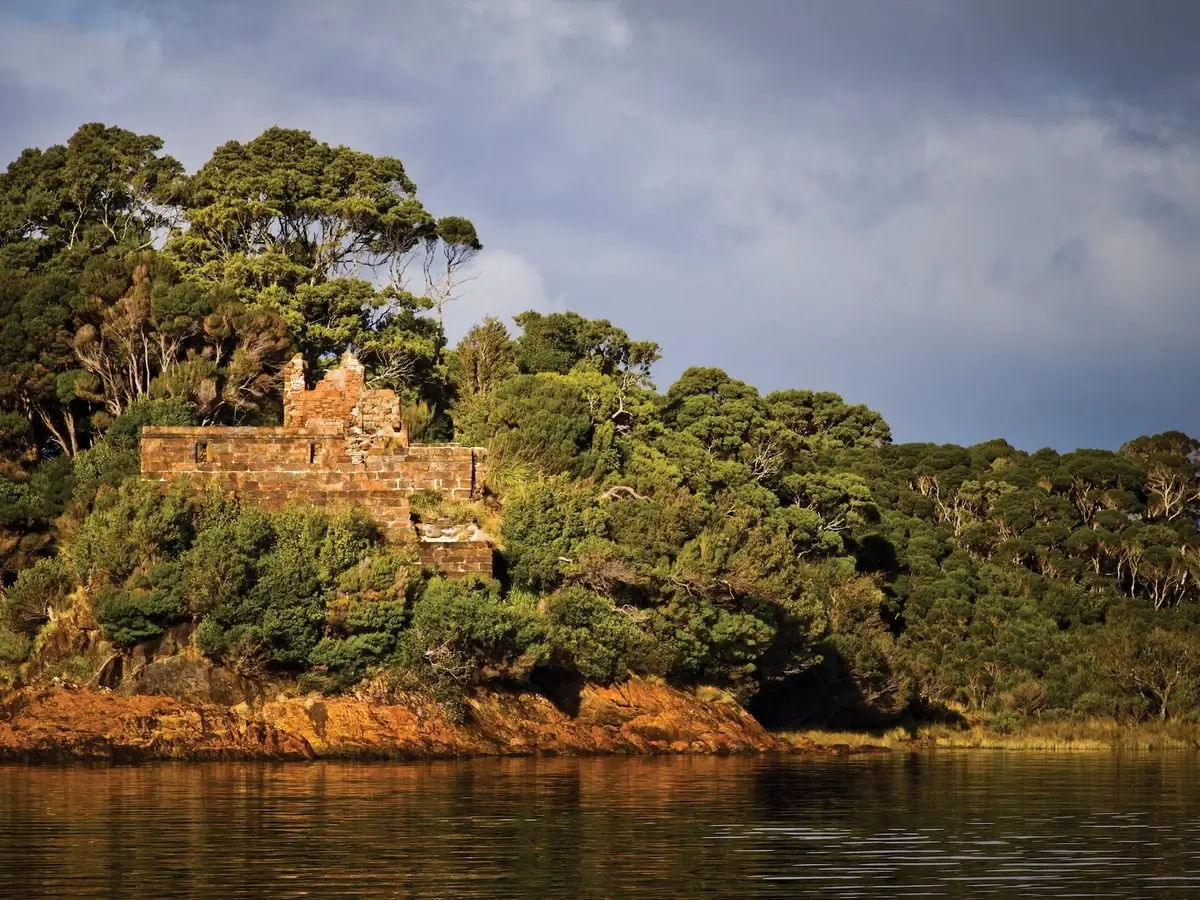
Image source: discovertasmania.com.au
24. Salamanca Place: A Market Lover’s Dream
Situated in the heart of Hobart, Salamanca Place is a historic precinct, but come Saturday, it transforms into a bustling market haven. With over 300 stallholders, Salamanca Market offers everything from Tasmanian crafts to gourmet local produce. Housed amidst 19th-century Georgian sandstone warehouses, the market provides a unique blend of the old and new.
From handcrafted wooden pieces to artisanal cheeses, it’s a shopper’s paradise and a sensory delight, making Salamanca Place a must-visit when in Hobart.

Image source: expedia.com
25. Tasmania’s Apple Fame: The Apple Isle
Ever wondered why Tasmania is often referred to as the ‘Apple Isle’? Historically, Tasmania was one of the world’s major apple producers. By the early 20th century, the island exported vast quantities of apples, especially to Europe. These exports played such a significant role in the state’s economy that the apple soon became synonymous with Tasmania.
Though apple production has since decreased, Tasmania’s apple legacy lives on, with many orchards offering tours and tastings.
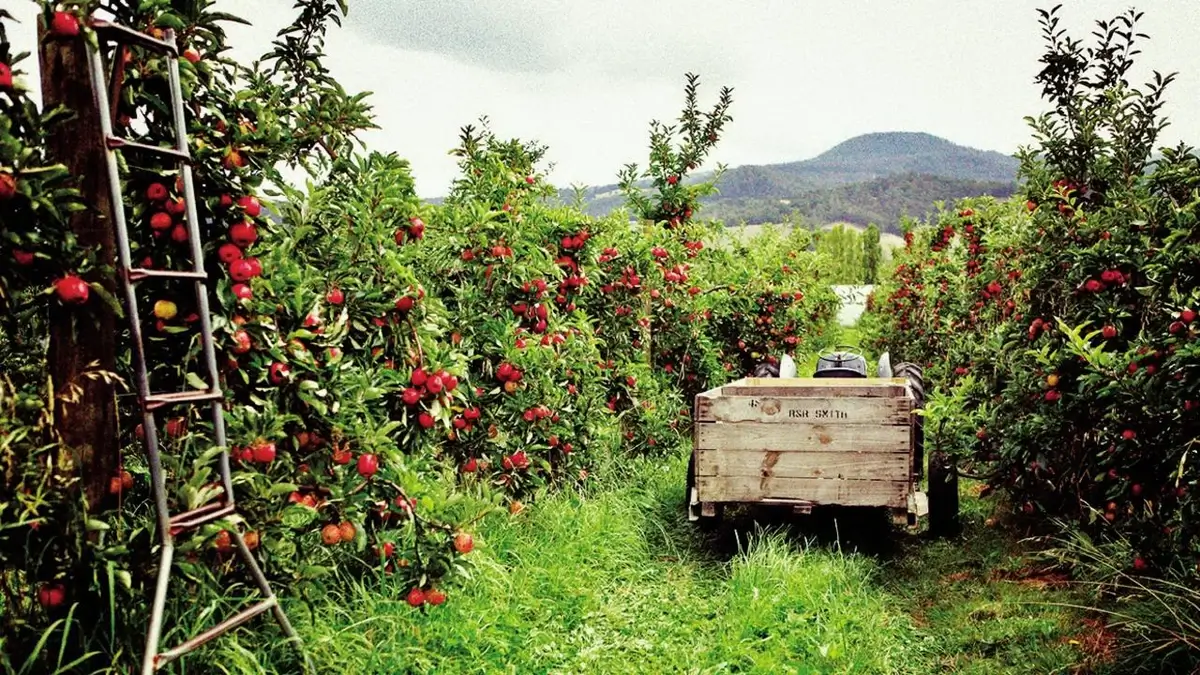
Image source: theaustralian.com.au
26. Tasmanian Aboriginal History: A Rich Tapestry
Tasmania’s history is deeply interwoven with its Indigenous people. The Tasmanian Aboriginals, known as the Palawa, have a heritage that spans over 40,000 years. Rich in culture, traditions, and a deep connection to the land, their history is a tale of survival, resilience, and adaptation.
While European settlement brought challenges, the Palawa today are reviving and celebrating their unique culture, from traditional crafts to the sacred art of mutton-birding.
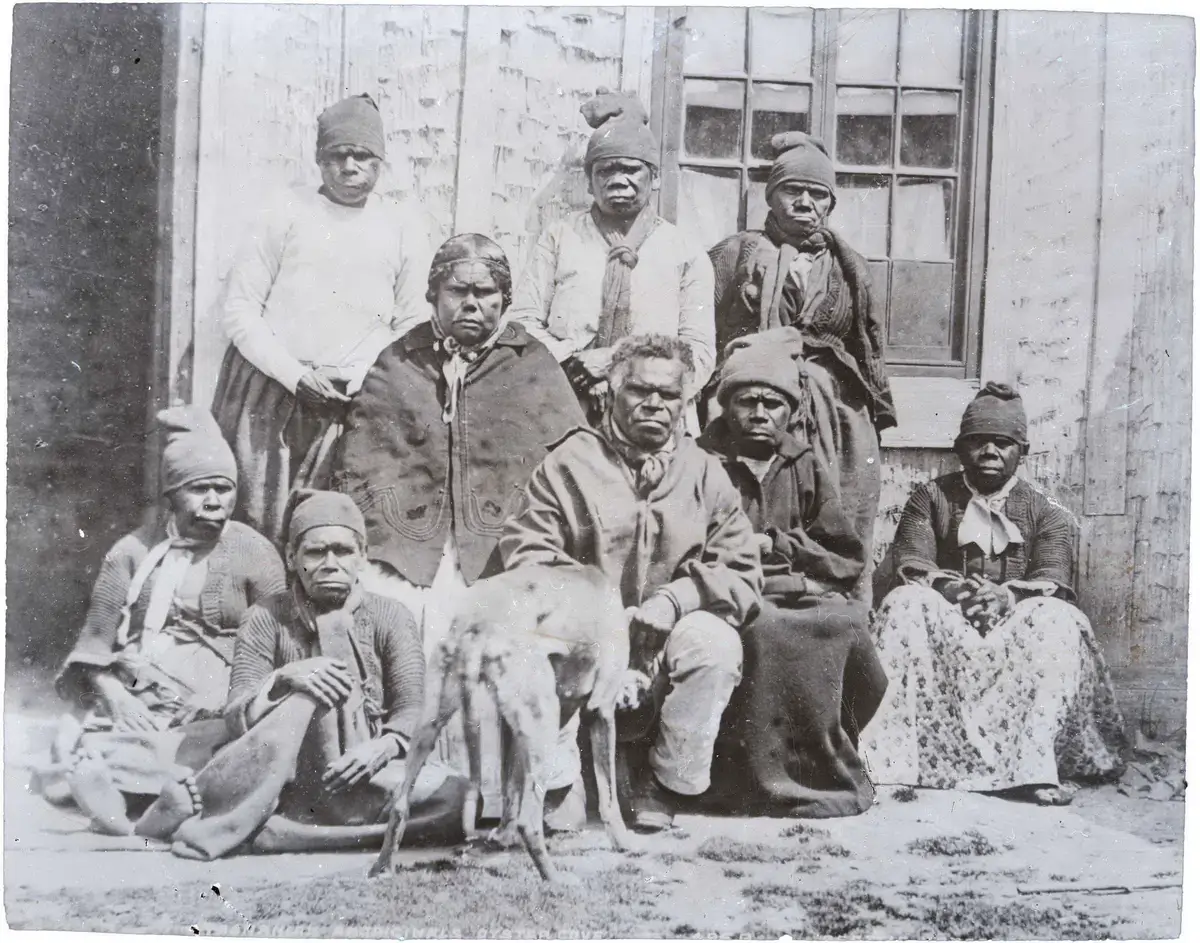
Image source: portrait.gov.au
27. Remarkable Cave’s Whisper: The Shape of Tasmania
Just south of Port Arthur, the Remarkable Cave is not just an ordinary sea cave. What makes it stand out is its peculiar opening that, when viewed from the observation platform, takes the shape of Tasmania itself. It’s nature’s playful way of mimicking art.
Formed by the erosive action of the sea, this cave, with its roaring waves and echoing whispers, is a testament to the timeless dance between land and water.
28. Bioluminescence Magic: The Sparkling Beaches
Imagine walking on a beach under a starry sky, only to find the shores echoing the cosmos. This isn’t a dream but a reality on some of Tasmania’s beaches, thanks to bioluminescence. Tiny marine organisms called dinoflagellates emit light, turning the waves into a neon-blue spectacle. This amazing fact isn’t just visually stunning; it’s also a fascinating natural phenomenon.
Preservation Bay and the River Derwent are among the favorite spots to witness this ethereal display. Nature’s own light show awaits those who venture here on the right nights.
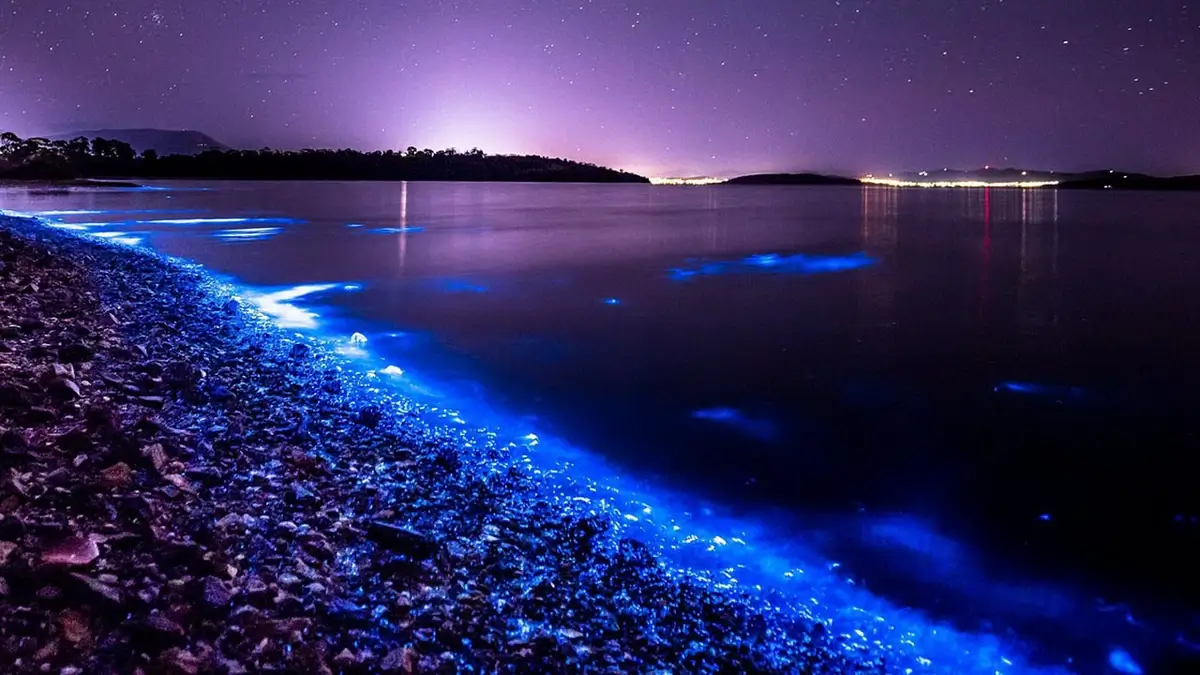
Image source: abc7chicago.com
29. Maria Island’s No Car Zone: Pedal or Walk, No Engines Allowed
In a world driven by engines, Maria Island stands out as a haven of tranquility. A fun fact: vehicles are a rarity here! Located off Tasmania’s east coast, this island is a testament to slow travel. Visitors can only explore by foot or on a bicycle, ensuring the island’s flora and fauna remain undisturbed.
From its historic ruins to the Painted Cliffs, the island offers a serene experience, accentuated by the absence of motor noise. It’s nature, history, and you – in perfect harmony.
30. Richmond Bridge: Australia’s Oldest Stone Span
Spanning the Coal River, the Richmond Bridge isn’t just a functional structure; it’s a piece of Australian history. Constructed in 1823 by convict labor, it holds the title of Australia’s oldest stone bridge still in use. Its sandstone arches and classic Georgian design are a testament to the architectural and engineering skills of the early 19th century.
More than just a bridge, it’s a silent witness to nearly two centuries of Tasmania’s evolution, making every crossing a step back in time.

Philip Northeast / Flickr
FAQ
What is unique about Tasmania?
Tasmania, Australia’s island state, is a treasure trove of natural wonders. From its rugged wilderness areas, such as the Tarkine Rainforest and Cradle Mountain, to its pristine beaches like Wineglass Bay, the state offers landscapes found nowhere else in the world. Additionally, its rich convict history, Indigenous heritage, and distinctive local fauna like the Tasmanian Devil add to its uniqueness.
Why is Tasmania different from Australia?
While Tasmania is a part of Australia, it stands out because of its distinctive geography, climate, and history. Separated from the mainland by the Bass Strait, it has evolved with a unique biodiversity. Its temperate climate contrasts with much of Australia’s warmer regions. Moreover, its rich convict history and well-preserved heritage sites make it distinct from other Australian states.
What is the best thing about Tasmania?
The best thing about Tasmania is arguably its unspoiled natural beauty. With over 40% of the land being national parks and reserves, it’s a haven for nature lovers. Whether it’s the serene beauty of the Huon Valley, the mystique of the Tarkine rainforest, or the rugged peaks of Freycinet Peninsula, Tasmania offers unparalleled natural experiences.
What is Tasmania also known as?
Tasmania is fondly referred to as “Tassie” by locals and Australians. Additionally, due to its historic apple industry, it’s also known as the “Apple Isle.”
What fruit is Tasmania famous for?
Tasmania is famously known for its apples. In the past, the state was a major apple producer, which led to its nickname, the “Apple Isle.”
Why is Tasmania popular?
Tasmania is popular for its diverse range of attractions. Its natural beauty, from rugged coastlines to dense rainforests, attracts nature enthusiasts. The island’s rich history, embodied in sites like Port Arthur and the Convict Brick Trail, draws history buffs. Additionally, festivals like Dark Mofo and destinations like MONA cater to lovers of contemporary art and culture.
Does it snow in Tasmania?
Yes, it does snow in Tasmania, especially in the highland areas. Regions like Cradle Mountain, Mount Wellington, and the Central Highlands can receive snowfall during the winter months, generally between June and August.
Is Tasmania cheap to live?
Compared to major Australian cities like Sydney or Melbourne, Tasmania, especially places outside of Hobart, can offer a more affordable cost of living. However, this can vary based on lifestyle, location, and personal choices. As with many places, living in the city center tends to be pricier than in rural areas.
Why do people love Tasmania?
People love Tasmania for various reasons. Its slower pace of life, tight-knit communities, and natural beauty make it a charming place to live or visit. The island’s rich history, culinary delights, and opportunities for outdoor activities, from hiking to fishing, also add to its appeal.
What food is Tasmania famous for?
Tasmania is renowned for its fresh, high-quality produce. Some of its famous foods include Tasmanian salmon, Leatherwood honey, and Tasmanian truffles. The state’s dairy products, particularly its cheeses, are also highly acclaimed. The burgeoning wine industry, producing cool-climate wines, especially Pinot Noir, adds to Tasmania’s gastronomic fame.







